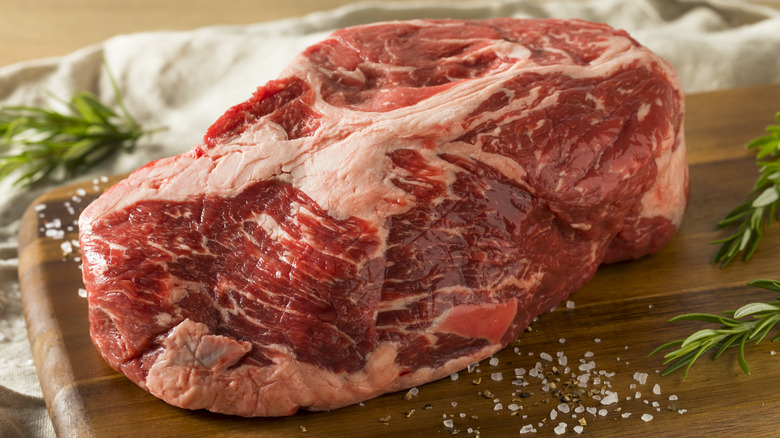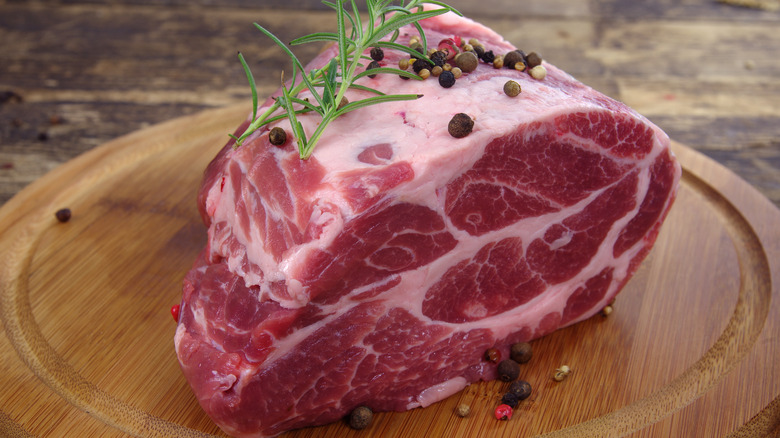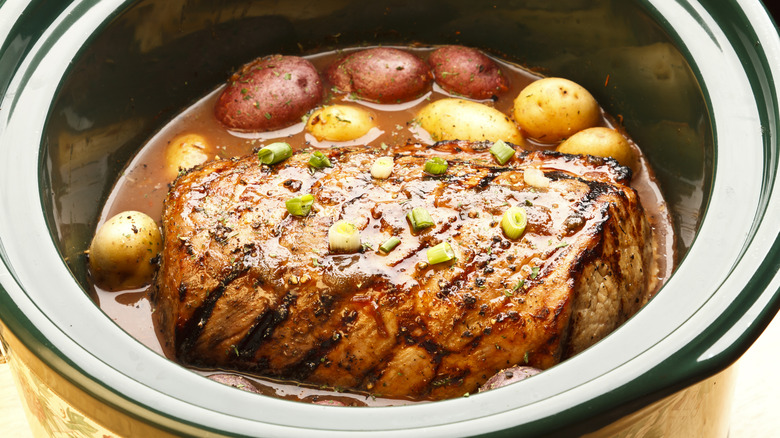Why Is Beef Chuck So Inexpensive?
With nicknames like "poor man's ribeye," cuts from the beef chuck don't exactly inspire visions of luxury and refinement like filet mignon. However, these labels came about for a reason. Sourced from the shoulder area of the cow, an area that's heavily exercised, the meat here is far tougher and leaner than other parts of the animal. This toughness and lack of marbling mean it's more difficult for chefs to get right. It's not uncommon for people to take a wrong turn somewhere while prepping their beef chuck and get a dish that's chewy and unpalatable rather than tender and juicy as they'd expect.
But the chuck's finicky nature isn't the whole story behind its affordability. It's also the most abundant part of the cow, accounting for over a quarter of the total carcass weight. With a steadier supply compared to rarer cuts like tenderloin, basic economics keeps the price low. So, if you're heading out to your local butcher, here's what you need to know about this sleeper hit of a cut.
There's simply more beef chuck to go around
As we mentioned earlier, one of the big reasons for beef chuck's affordability lies in the sheer abundance of this cut on a single animal. The chuck primal, which encompasses the shoulder and upper arm area, accounts for a significant portion of the cow's overall weight — 26.8% of the carcass, according to the University of Nebraska-Lincoln. This plentiful supply, coupled with the relative ease of production, contributes to the lower price point of cuts taken from this area (like chuck roast and chuck steak) compared to the likes of tenderloin or ribeye. This, combined with its other admittedly undesirable characteristics of being very lean and tough, all contribute to its inexpensiveness.
Note that it doesn't necessarily mean that beef chuck is inferior to every other part of the cow. When cooked well, it can be extremely flavorful. And while the chuck isn't as marbled as parts like the loin, there's still some intramuscular fat hidden within that can contribute some juiciness to the dish you're cooking.
Cooking beef chuck requires skill and patience
Many write off beef chuck due to its leanness and toughness. However, these very traits make it ideal for certain cooking techniques such as braising, making stews, or simply as the star of the show in an instant pot roast. Chuck's lack of extensive marbling allows it to withstand prolonged cooking without becoming greasy. Its toughness from frequent muscle use responds beautifully to low-and-slow methods that gradually break down connective tissues, transforming them from leathery and chewy to buttery and tender.
Chuck's robust flavor also pairs exceptionally well with aromatics and seasonings, shining in recipes like herb and fig pot roast. With a flavorful marinade and patient cooking, you'll be amazed at how different it looks from the thick, tough cut of meat you started with.
So rather than being a "bad" cut, the chuck is simply underappreciated. Give this underdog a try in your kitchen. Not only will you save some cash, but you'll also discover how immensely tasty it can be when treated right.


